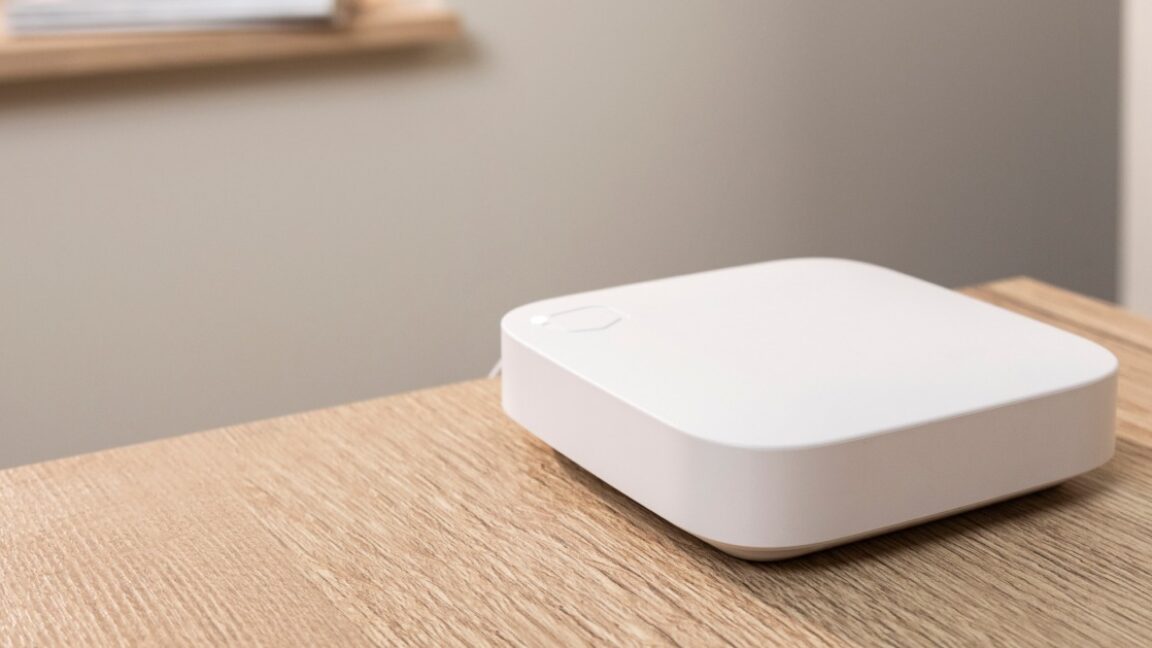
Credit: Futurehome
Smart home device maker Futurehome is forcing its customers’ hands by suddenly requiring a subscription for basic functionality of its products.
Launched in 2016, Futurehome’s Smarthub is marketed as a central hub for controlling Internet-connected devices in smart homes. For years, the Norwegian company sold its products, which also include smart thermostats, smart lighting, and smart fire and carbon monoxide alarms, for a one-time fee that included access to its companion app and cloud platform for control and automation. As of June 26, though, those core features require a 1,188 NOK (about $116.56) annual subscription fee, turning the smart home devices into dumb ones if users don't pay up.
“You lose access to controlling devices, configuring; automations, modes, shortcuts, and energy services,” a company FAQ page says.
You also can’t get support from Futurehome without a subscription. “Most” paid features are inaccessible without a subscription, too, the FAQ from Futurehome, which claims to be in 38,000 households, says.
After June 26, customers had four weeks to continue using their devices as normal without a subscription. That grace period recently ended, and users now need a subscription for their smart devices to work properly.
Some users are understandably disheartened about suddenly having to pay a monthly fee to use devices they already purchased. More advanced users have also expressed frustration with Futurehome potentially killing its devices’ ability to work by connecting to a local device instead of the cloud. In its FAQ, Futurehome says it “cannot guarantee that there will not be changes in the future” around local API access.
In response, a Reddit user, according to a Reddit-provided translation of the Norwegian post, said:
I can understand to some extent that they have to do it for services that have ongoing expenses, like servers (even though I actually think it's their problem, not mine, that they didn't realize this was a bad idea when they sold me the solution), but a local function that only works internally in the equipment I've already paid for shouldn't be blocked behind a paywall.
According to Futurehome, subscription-less customers can still create, delete, and switch between households, edit household users and owners, and update and factory reset their Futurehome Smarthubs.
Ars Technica contacted Futurehome about its response to customer backlash but didn’t receive a response before publication.
Futurehome recently went bankrupt
Futurehome says its recent bankruptcy necessitated the subscription fee. Its FAQ page reads:
Futurehome AS was declared bankrupt on 20 May 2025. The platform and related services were purchased from the bankruptcy estate—50 percent by former Futurehome owners and 50 percent by Sikom Connect—and are now operated by FHSD Connect AS.
To secure stable operation, fund product development, and provide high-quality support, we are introducing a new subscription model.
The indebted company promised customers that the subscription fee would allow it to provide customers “better functionality, more security, and higher value in the solution you have already invested in," reported Elektro247, a Norwegian news site covering the electrical industry, according to a Google-provided translation.
The problem is that customers expected a certain level of service and functionality when they bought Futurehome devices. And as of press time, Futurehome's product pages don't make the newfound subscription requirements apparent. Futurehome’s recent bankruptcy is also a reminder of the company’s instability, making further investments questionable.
Users are discussing ways to attempt to restore Futurehome device functionality without a subscription, including by moving the devices to open standards. Communication has likely been somewhat stifled by the June shutdown of the Futurehome user forum, though.
Futurehome has fought efforts to crack its firmware, with CEO Øyvind Fries telling Norwegian consumer tech website Tek.no, per a Google translation, “It is regrettable that we now have to spend time and resources strengthening the security of a popular service rather than further developing functionality for the benefit of our customers.”
Futurehome's move has become a common strategy among Internet of Things companies, including smart home hub maker Wink. These companies are still struggling to build sustainable businesses that work long-term without killing features or upcharging customers.

-
 C114 Communication Network
C114 Communication Network -
 Communication Home
Communication Home


